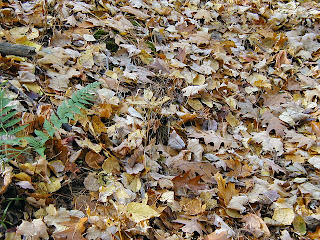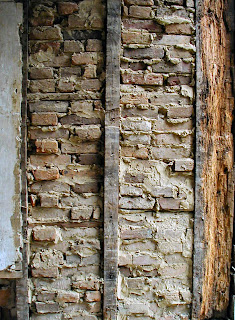I was doing some research recently in Philadelphia, combing through early nineteenth century City Directories on microfiche. I wasn't looking for a person, but for a profession or professions. Anything that might fall under the rubric of undertaker; although they didn't catch on in the United States until later in the century, someone was peddling funeral accessories in Philadelphia in the 1810s and early 1820s. I had no luck in my search (for starters, the early directories are organized by surname, not by business type, and I ran out of time to scan all the individuals for profession).
What I did find was intriguing. Starting around 1810, some of the compilers of City Directories began listing "Layers Out of the Dead" in the same section as physicians, midwives, bleeders with leeches, bleeders (presumably without leeches), and dentists (Laderman 1996). I recorded these lists for 1816, 1820, 1823, and random entries from an 1822 "Supplementary" section from a directory without a specialized list of practitioners. These layers out of the dead were predominantly women (of the 36 entries I recorded, one for certain was for a man, three entries for the same individual was probably for a man, and two more (both for a single individual) might be for a man). None of the people in the lists I recorded were African-Americans.
Although other researchers have noted that layers out of the dead were often widows, only one of the entries I recorded specifically noted she was a widow (Rebecca Graff, 1820). There were several women who were single (no man with the same last name living at the same address), and several who were either listed as "Mrs." or who had a male with the same last name residing with them. In several examples, the woman appears only in the list of layers out of the dead, and not in the list of Philadelphia residents; only the male with the same last name is listed (presumably, these are the husbands; I wonder if brothers and unmarried sisters living together would also share a single entry, or would get separate ones). There is one example of two women with the same last name living at the same address (sisters? mother and daughter?); while I know one laid out the dead, I don't know what the other did for a living, as both women shared an entry (the usual entry takes the form of "Henderson James, carpenter, 222 South Third"; this 1820 entry reads only "Osborne Hannah & Sarah, 1 Laurel").
Some women kept their mortuary activities separate from their other business pursuits and their regular Directory entry either neglects to mention a profession (as in the case of S. Snowden in 1820 and Sarah Osborne in 1823), or lists a completely different profession (as in the case of Elizabeth Helmbold, midwife in 1816 and Sarah Snowden, mantuamaker in 1823). These women often had more than one job -- laying out the dead as well as mantuamaker (Sarah Snowden, 1823), midwife (Elizabeth Hembold, 1820), boarding house keeper (Jane Hook, 1820). Laying out the dead was apparently not terribly lucrative, as even William Adams in 1822, the only individual I recorded that was definitely male, also worked as a scrivener and teacher.
As far as my research goes, this is fascinating as it shows a specialization in dealing with the dead into the early 1800s. Could the business of laying out the dead extend further back than 1810? Possibly; the City Directories for Philadelphia in the microfiche collection I was looking at go back only to 1785, and it seems it was only a particular publisher who included lists of layers out of the dead. I did not find this profession in the 1800 City Directory that I read in its entirety -- but that could be a fluke of that particular directory rather than documenting the absence of the profession. I'd have to look at more examples of earlier directories; I looked at 1800, then skipped to 1823 and worked my way backwards, and quit at 1816.
There was also a tantalizing hint at further specialization in mortuary trades: an 1822 entry lists Richard Life, manufacturer of black bordered letter paper, and visiting cards for mourning. He appeared in a list of "Removals" (folks who had left Philadelphia), but I was unable to find him in earlier directories. I also found an 1800 entry for John Leacock, coroner.
All that background brings me to the
patriarchal equilibrium part of this. In her book,
History Matters, Judith Bennett describes the brewing trade in late Medieval England. It is "a story of radical change, a story of how women were forced out of the trade as it became profitable and prestigious.... In 1300, women controlled the trade in brewed drink; by 1600, it was controlled by men" (p. 72). It is also the story of continuum; in 1300, when brewsters (female brewers) controlled the trade, it wasn't much of a trade to control. It was a low-skilled, low-profit, low-status endeavor. As technology changed and profits increased, women were increasingly excluded from brewing -- either explicitly or because they couldn't afford to purchase the new equipment. They left brewing, and continued to patch together an economic existence by taking in sewing, serving the drinks they used to brew, hiring themselves out as domestics, selling eggs, and laying out the dead (aha! in England, then, it goes back to medieval times.).
By the middle of the nineteenth century, and most especially after the Civil War, the mortuary trades in the United States had become professionalized and specialized. Undertakers, embalmers, specialized coffin manufacturers, coffin hardware manufacturers, burial garment factories, all made scads of money supplying what had become the needs of death. And the vast majority of them (if not all of them) were men. Sure, women worked in some of the factories, but these were low-skilled, low-status jobs that paid miserably and were often catastrophic, health-wise. Undertakers took care of the bodies post-mortem, and women were forced out of yet another means of eaking out a living, just as what they'd already been doing became a profitable business.
I'm sure there are many other examples.
References:
Bennett, Judith M. (2006) History Matters: Patriarchy and the Challenge of Feminism. University of Pennsylvania Press, Philadelphia. WorldCat Link.
Laderman, Gary (1996) The Sacred Remains: American Attitudes Towards Death 1799-1883. Yale University Press, New Haven. WorldCat Link.
Philadelphia City Directories for 1800, 1816, 1820, 1821, 1822, 1823. Historical Society of Pennsylvania, Philadelphia. Call No.: Wa .01 Link to HSP Catalog.
 Taughannock Falls, December 24th. The rime really was blue.
Taughannock Falls, December 24th. The rime really was blue. Taughannock Falls, December 29. Misty!
Taughannock Falls, December 29. Misty! Ice Flow, December 29.
Ice Flow, December 29. Ice Falls, December 29
Ice Falls, December 29






























